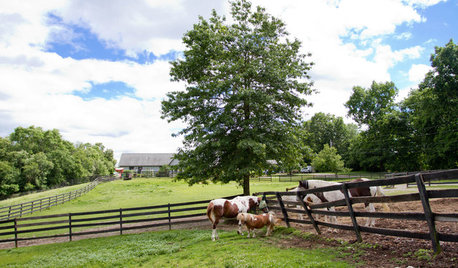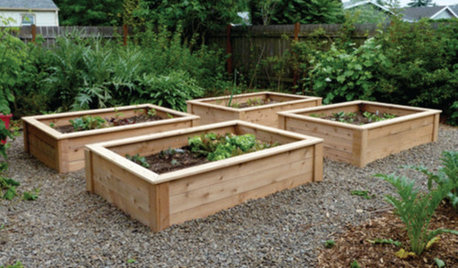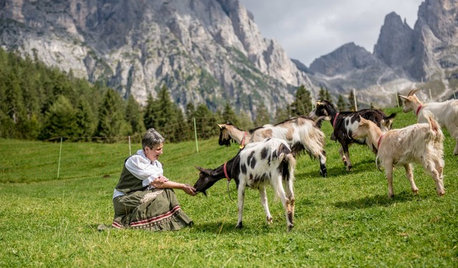Grain and vegetable Amaranth
AlyoshaK
9 years ago
Related Stories

FARM YOUR YARDIf You Have Room for Only One Summer Crop ...
Get an edible that’s long on flavor even if you’re short on space, with a long-time gardener’s favorite picks
Full Story
SUMMER FRUITS AND VEGETABLESHow to Grow Your Own Fresh, Sweet Corn
Here's how to plant and care for your own mini cornfield
Full Story
GARDENING GUIDES10 Easy Edibles for First-Time Gardeners
Focus on these beginner-friendly vegetables, herbs, beans and salad greens to start a home farm with little fuss
Full Story
HOUZZ TOURSHouzz Call: Show Us Your Farmhouse!
Bring on the chickens and vegetable patches. If your home speaks country, it might appear in a featured ideabook
Full Story
GARDENING GUIDESOrganic Matters: Thwart Insect Pests With Trap Crops
Add a few sacrificial plants to your garden to lure insects away from the harvest
Full Story
PRODUCT PICKSGuest Picks: Rustic Garden Refinements
Boost garden style while growing veggies and flowers with weathered wood, raw-looking metal and other natural materials
Full Story
HEALTHY HOME12 Ways to Set Up Your Kitchen for Healthy Eating
Making smart food choices is easier when your kitchen is part of your support team
Full Story
GARDENING GUIDESGet a Head Start on Planning Your Garden Even if It’s Snowing
Reviewing what you grew last year now will pay off when it’s time to head outside
Full Story
FRONT YARD IDEAS10 Ideas for a Front-Yard Edible Garden Your Neighbors Will Love
Choosing attractive, well-mannered plants and sharing the bounty will go a long way toward keeping the peace
Full Story
FARMHOUSESWorld of Design: See How 9 Families Live and Farm on Their Land
Join us as we visit the homes and farms of passionate food producers and hear about rural life around the globe
Full Story






Okiedawn OK Zone 7
AlyoshaKOriginal Author
Related Professionals
Chattanooga Landscape Architects & Landscape Designers · Ilchester Landscape Architects & Landscape Designers · Maple Heights Landscape Architects & Landscape Designers · Allentown Landscape Contractors · Lebanon Landscape Contractors · Panama City Beach Landscape Contractors · St. Louis Landscape Contractors · Camp Springs Landscape Contractors · Billerica Decks, Patios & Outdoor Enclosures · Fredonia Decks, Patios & Outdoor Enclosures · Hershey Decks, Patios & Outdoor Enclosures · Honolulu Decks, Patios & Outdoor Enclosures · Hot Springs Village Decks, Patios & Outdoor Enclosures · Hyattsville Decks, Patios & Outdoor Enclosures · Medford Decks, Patios & Outdoor EnclosuresOkiedawn OK Zone 7
AlyoshaKOriginal Author
Okiedawn OK Zone 7
AlyoshaKOriginal Author
Okiedawn OK Zone 7
AlyoshaKOriginal Author
Okiedawn OK Zone 7
AlyoshaKOriginal Author
Okiedawn OK Zone 7